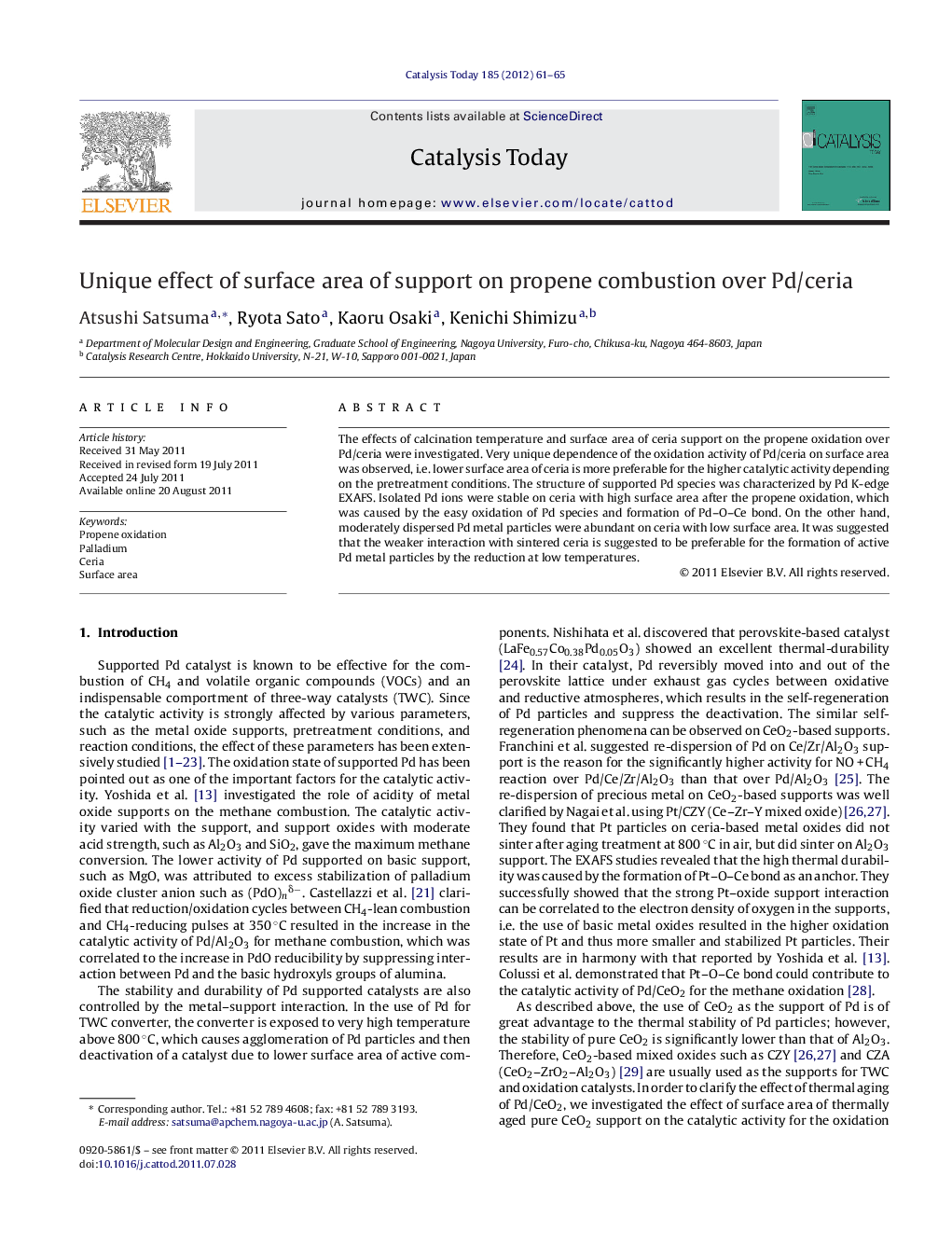| Article ID | Journal | Published Year | Pages | File Type |
|---|---|---|---|---|
| 55502 | Catalysis Today | 2012 | 5 Pages |
The effects of calcination temperature and surface area of ceria support on the propene oxidation over Pd/ceria were investigated. Very unique dependence of the oxidation activity of Pd/ceria on surface area was observed, i.e. lower surface area of ceria is more preferable for the higher catalytic activity depending on the pretreatment conditions. The structure of supported Pd species was characterized by Pd K-edge EXAFS. Isolated Pd ions were stable on ceria with high surface area after the propene oxidation, which was caused by the easy oxidation of Pd species and formation of Pd–O–Ce bond. On the other hand, moderately dispersed Pd metal particles were abundant on ceria with low surface area. It was suggested that the weaker interaction with sintered ceria is suggested to be preferable for the formation of active Pd metal particles by the reduction at low temperatures.
Graphical abstractFigure optionsDownload full-size imageDownload high-quality image (111 K)Download as PowerPoint slideHighlights► Unique dependence of the propene oxidation activity of Pd/ceria on surface area was observed. ► Lower surface area of ceria is more preferable for the activity than higher surface area depending on the pretreatment conditions. ► The lower catalytic activity for Pd/ceria having higher surface area was attributed to the formation of isolated Pd ions. ► EXAFS study revealed that the essential controlling factor for the activity is the formation of metallic Pd species.
